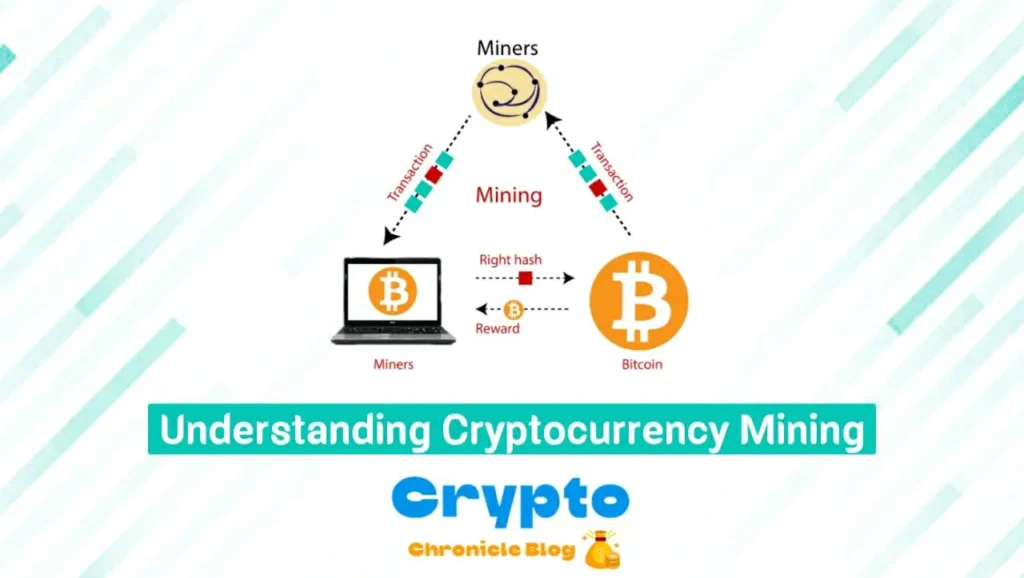The meteoric rise of cryptocurrencies, exemplified by the likes of Bitcoin, has thrust the concept of mining into the forefront of technological discourse. Unlike the traditional extraction of precious metals, cryptocurrency mining is a sophisticated process that revolves around complex computations and the maintenance of decentralized digital ledgers. In this article, we delve into the intricate world of cryptocurrency mining, unraveling its core principles and shedding light on the underlying technology driving this phenomenon.
At its essence, cryptocurrency mining serves as the backbone of decentralized digital currencies, ensuring the integrity and security of transactions within the network. Through a combination of cryptographic algorithms and computational power, miners validate and record transactions onto the blockchain, a distributed ledger that serves as the immutable record of all transactions in a given cryptocurrency.
Moreover, the process of cryptocurrency mining is not merely a means of transaction validation but also an incentivized mechanism for network participants. Miners dedicate computational resources to solving complex mathematical puzzles, with successful completion resulting in the creation and distribution of new cryptocurrency tokens. This incentivization model fosters a self-sustaining ecosystem where miners are rewarded for their contributions to the network’s security and efficiency.
What is Cryptocurrency Mining?
In the realm of cryptocurrencies, mining isn’t about extracting physical materials. Instead, it’s the process of validating transactions on a blockchain network and adding new blocks to the digital ledger. Miners, the individuals or entities participating in this process, use specialized computer hardware to solve intricate mathematical puzzles. The first miner to solve the puzzle gets to add a new block to the blockchain, and as a reward, they receive newly minted cryptocurrency.
The Role of Blockchain
Cryptocurrencies operate on a decentralized system called blockchain. This distributed ledger technology ensures transparency and security by recording all transactions chronologically and publicly across a network of computers. Each block in the chain contains transaction data and a cryptographic hash, linking it securely to the previous block.
The Mining Process Explained
-
Transaction Verification: Miners receive a pool of unverified transactions. They use their computing power to verify these transactions, ensuring they’re legitimate and haven’t been spent twice (double-spending).
-
Solving the Cryptographic Puzzle: Miners compete to solve a complex mathematical problem. This process, called Proof of Work (PoW), requires significant computing power. The first miner to find the solution “hashes” the block, creating a unique fingerprint that validates the transactions within.
-
Adding a New Block: The winning miner gets to add the verified block to the blockchain. This new block references the previous block’s hash, creating an unalterable chain of transactions.
-
Reward Distribution: As a reward for their efforts, the successful miner receives a predetermined amount of cryptocurrency. This incentivizes miners to participate in the network’s security and transaction validation.
The Importance of Mining
Cryptocurrency mining serves several crucial purposes:
-
Secures the Network: The complex puzzles and competition among miners make it highly difficult to tamper with the blockchain. Miners essentially act as auditors, ensuring the integrity of the network.
-
Decentralization: Mining contributes to the decentralized nature of cryptocurrencies. Anyone with the necessary hardware can participate, preventing a single entity from controlling the network.
-
Issuing New Coins: Mining is how new cryptocurrency units enter circulation. The reward for successful mining gradually decreases over time, controlling inflation and maintaining the overall supply of coins.
Beyond Proof of Work
While Proof of Work (PoW) is the most established mining consensus mechanism, it’s not without its drawbacks, such as high energy consumption. Alternative mechanisms like Proof of Stake (PoS) are gaining traction, offering a more energy-efficient approach to securing the network.
Conclusion
In conclusion, cryptocurrency mining stands as a cornerstone in the operation of digital currencies, facilitating transaction validation, network security, and the issuance of new coins. As the cryptocurrency landscape progresses, mining technology is poised to advance further, potentially leading to increased efficiency and sustainability in the process.
For those interested in delving deeper into the realm of cryptocurrency mining and its implications, reputable sources such as academic journals, industry publications, and online forums offer valuable insights. Websites like CoinDesk, Cointelegraph, and academic databases such as IEEE Xplore and Google Scholar provide a wealth of information on mining technology advancements, emerging trends, and the broader impact of mining activities on the cryptocurrency ecosystem. Staying informed through these sources can help individuals navigate the evolving landscape of cryptocurrency mining effectively.




